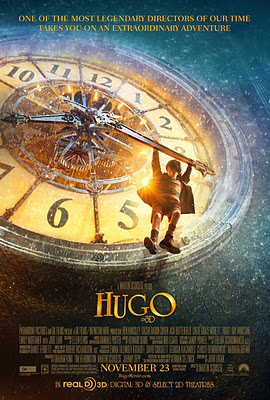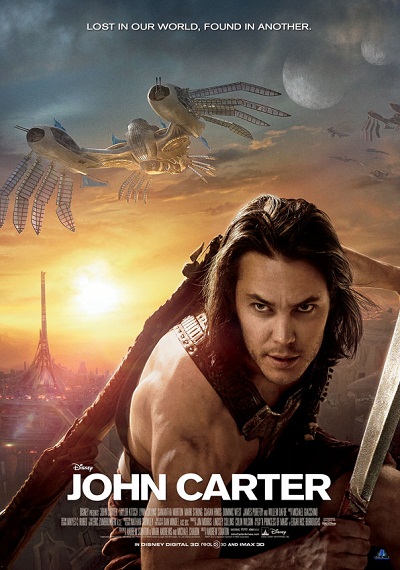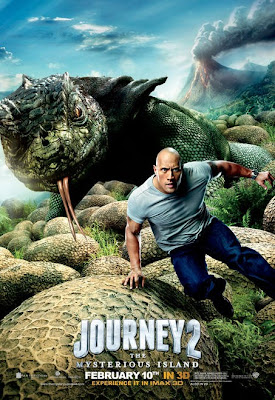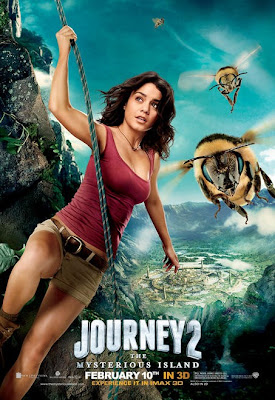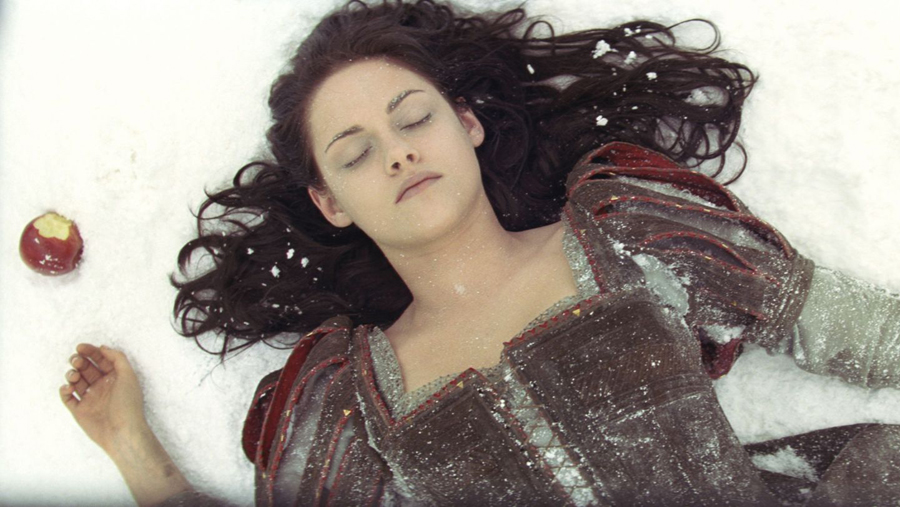 |
| Kristen Stewart as Snow White in Snow White and the Huntsman |
This guest post written by Scott Mendelson was originally published July 2011 at Mendelson’s Memos. Cross-posted with permission.
There were a few interesting articles written over the last several months about the unusual amount of ass-kicking (or at least take-charge) young female roles being written into mainstream cinema. Whether it was Chloe Moretz in Kick-Ass, Hailee Steinfeld in True Grit, Jennifer Lawrence in Winter’s Bone, or Saoirse Ronan in Hanna, the last 18 months or so has seen a mini-wave of genre pictures where young females were basically the lead characters (or in the case of Kick-Ass the star attraction), ‘strong independent character’ (god, I hate that cliche) who not only could fend for themselves but were not defined in any way, shape, or form by their male love interest (not a one of them had a boyfriend). Yes, I would include Sucker Punch in this category, as it was basically a satiric examination of whether ass-kicking young women in pop culture were automatically sexualized by virtue of the salacious nature of such imagery (stop whining and read THIS). The somewhat negative undercurrent of this trend is that these actresses were generally under 18, often barely passed puberty. Point being, what would become of these actresses once they reached adulthood? If recent developments are any indication, Hollywood has a genuine desire to roll back the progress clock and turn these actresses into fairy tale princesses.
At the moment, we now have two competing variations on Snow White set to be released in the next year. One, pictured below, will star Lily Collins (from The Blind Side and soon to be seen as Taylor Lautner’s token girlfriend in Abduction) as the titular princess, while the other will star Kristen Stewart as the ‘fairest of them all’. Both are claiming to be somewhat revisionist, and for the moment I shall take them at their word. But no matter how much armor and battle-axes you give Snow White, you’re still hiring one of our more talented actresses (say what you will about Twilight, but she absolutely sells Bella Swann and shines in the likes of Adventureland) to play a woman whose primary job is to run away from an evil witch, play house with a bunch of asexual dwarves, then finally bite a poison apple and await rescue from a theoretical Prince Charming. Of course, you could argue that Ms. Collins isn’t one of the ‘great actresses of our time’ yet. But the fact that we have two competing projects based on Snow White is a sad commentary on our times, both as a statement about how obsessed the studios are with any kind of brand recognition as well as the kind of roles available for actresses on the cusp of adulthood.
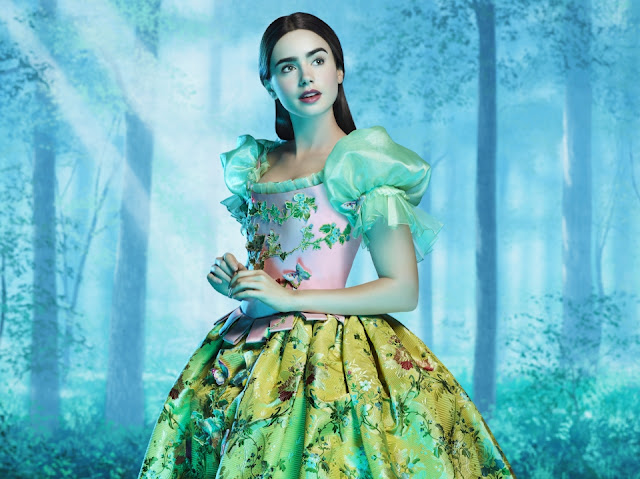 |
| Lily Collins as Snow White in Mirror, Mirror |
And it gets worse. What was Hailee Steinfeld’s reward for earning an Oscar nomination for Best Supporting Actress for a film where she was unquestionably the lead? What was her follow-up project for stealing True Grit from Jeff Bridges, Matt Damon, and Josh Brolin? She gets to play Sleeping Beauty in (yet again) a revisionist variation on that old-chestnut. And we’ll see who gets to play Princess Aurora in the other competing project, Maleficent (allegedly starring Angelina Jolie as the villain) which was to be directed by Tim Burton before he came to his senses. Worst of all (and the catalyst for this rant) is the news that Emma Watson, who portrayed one of the great feminist icons of recent times, Ms. Hermione Granger herself, is being wooed for the lead role in Guillermo del Toro’s live-action variation of yes, Beauty and the Beast. Never mind that Guillermo del Toro certainly has better things to do with his time. Never mind that we have no real need for a live-action version of “Stockholm Syndrome: The Movie” (even my 3 year old dismissed the Disney version, because she stated that the Beast was mean and a grouch). It is sadly predictable that, as soon as Ms. Watson (a fiery feminist in her own right) was able to basically play adult roles, she would be shoved into the helpless fairy-tale heroine box.
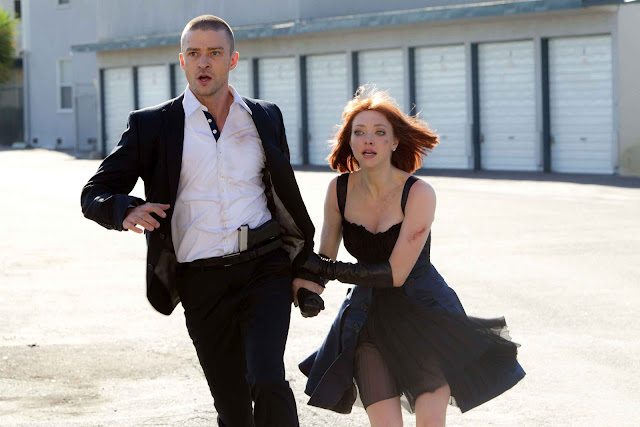 |
| Justin Timberlake and Amanda Seyfried in In Time |
And that is really the point. To be fair, it’s not an all-encompassing issue. Chloe Moretz remains fairy tale-free at this point, and Saoirse Ronan has yet to be cast in a theoretical live-action version of The Little Mermaid. She does have a ‘teen girls as hit-women’ caper with Alexis Bledel, Violet and Daisy, that I desperately want to see. And Dakota Fanning has yet to be cast as the token hot girl quite yet. But there remains a disturbing trend that allows young actresses to be vibrant and active in their onscreen fates only until they reach young adulthood. Once they are old enough to be legally sexualized, their worth as empowered heroines is seemingly lost and they end up being tasked with playing the token love interest (SEE Emily Blunt be pulled by the hand by Matt Damon in The Adjustment Bureau!), helpless hostage/potential woman in refrigerator (SEE Blake Lively as the kidnapped girlfriend of both Taylor Kitsch and Aaron Johnson in Oliver Stone’s Savages!), or both (SEE Amanda Seyfried as Justin Timberlake’s hostage who learns to love him in In Time!). It is as if female roles can only be worthwhile when they are too young to be viewed exclusively as sexual objects. Now there is a new category for which to pigeon hole these actresses: perfectly pretty princess. Once they are old enough to be cast in stereotypical female roles, it’s straight to the ‘token’ box, with an occasional diversion in fairy tale theater. Is this new mini-fad simply another variation on tokenism, or a more insidious attempt to keep said young actresses virginal and pure?
It is telling that bloggers and pundits bemoaned Jennifer Lawrence passing on Savages and picking The Hunger Games instead. Maybe, no matter how prestigious an Oliver Stone film might be (because he writes SO well for female characters…), Lawrence chose to be a lead in her own action franchise rather than play a random hottie who is abducted as a pawn in a drug spat involving her dueling boyfriends (on the surface, it seems like a prestige variation on Double Dragon). And it is telling that no one seems to notice or care that a number of our most promising young actresses are being jammed into the ‘girl cage’ just at the age when they would be old enough to play quality adult female roles. Of course, roles such as that are few and far between. For the likes of Watson and Steinfeld, it appears once again that the choice is between no mainstream roles or regressive token roles or playing a live-action Disney princess. Oh well, I’m sure they can find an episodic television series when the time comes. When it comes to quality roles for adult women, for too many actresses, it is television instead of film that is the pathway to happily ever after.
Scott Mendelson is, by hobby, a freelance film critic/pundit who specializes in box office analysis. He blogs primarily at Mendelson’s Memos while syndicating at The Huffington Post and Valley Scene Magazine. He lives in Woodland Hills, CA with his wife and two young kids where he works in a field totally unrelated to his BA in Film Theory/Criticism from Wright State University.

